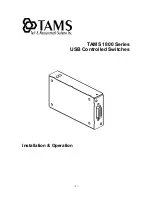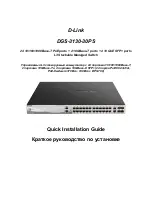
multiSwitch – user manual
© TOPEX 2008 8
1.2 Packet switching
In the packet switching network, data are transmitted in short packets which have a maximum
size limit. If a larger packet is to be sent from a source site, this packet will be split into a series of
shorter packets.
Each packet contains a part of user data (or the whole of a shorter packet) and some control
information. The control information should at least contain routing information needed by the network
for sending packets to the destination.
At each node of a path, packets are received, stored for a short period of time and then
transmitted to the next node. Compared with circuit switching, packet switching has the following
advantages:
High line efficiency: a single inter-node link can be dynamically shared by multiple packets. In this
case, packets are queued and sent out from the relevant link as soon as possible. However, in
circuit switching, the time on the inter-node link is allocated in advance with synchronous time
division multi-channel multiplexing. In this case, the time slot allocated to a connection cannot be
occupied by other connections even when it is idle;
The packet switching network can implement data rate conversion. In this case, two sites with
different data transmission rates can exchange packets with each other since each site is
connected to its communication node at the respective rate. However, in circuit switching, the two
sites connected with a circuit should transmit and receive data at the same rate;
In a circuit switching network, when the traffic is high, some calls will be blocked, i.e., the network
will reject new connection requests before the load on the network reduces. However, in a packet
switching network, such packets will still be received but the transmission delay is increased;
Priorities are used. If there are many packet queues to be transmitted for a node, it can transmit
packets with higher priorities in precedence. These packets will have lower delay than those with
lower priorities.
Generally, packet switching does not mean to send the whole packet of a user. Instead, one
packet is divided into several packets that can be saved in the memory.
This increases the switching speed. This mode is applicable to interactive data transmission.
According to services provided by the communication subnet for the termination system,
packet switching can be further divided into datagram and virtual circuit switching.
1.3 IP telephony technology
The major objective of the IP telephony technology is to combine the IP network with the
telephony network. Moreover, IP telephones can be used by not only computer users but also ordinary
telephone users.
The two networks have different characteristics: the IP network is a kind of network
transmitting data information, in which the packet switching technology is applied; while the telephone
network is a kind of network transmitting analog voice signals, in which the circuit switching technology
is applied.
As we know, the characteristic of circuit switching is that a circuit is occupied whenever a call
is connected. It will be occupied all along as long as no party hangs up no matter whether the two
parties are talking to each other.
Generally, a party is listening while the other party is talking. Therefore, in this case, at least
50% of the circuit is not utilized and the circuit utilization ratio is very low.
The packet transmission technology is to divide information data to be transmitted into groups
based on a certain length (i.e., cutting them to “packets”), add an address flag to each “packet”, and
then transmit them in the store-forward mode.









































